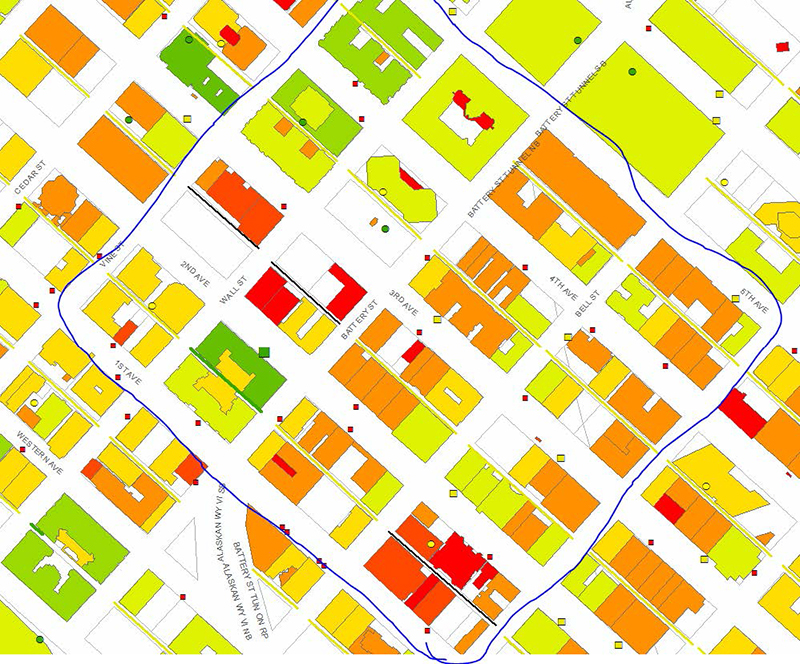United States - European Commission Urban Freight Twinning Initiative: Compendium of Project Summaries, Volume II
Overview of 2018-2019 International Urban Freight Roundtables
| Research | Metro Plans | Policy | Pilot | United States |
City of Seattle's Final 50 Feet Program
The Final 50 Feet program identified a new area of logistics study around the final 50 feet of a goods delivery trip and seeks to optimize the most time-intensive and costly portion of goods movement in urban areas. This program's research established and quantified links between building operations and impacts to goods movement. Proof-of-concept pilot studies are updating the city's understanding of the fast-changing urban goods delivery landscape as well as providing detailed curb space use at archetypical buildings. The information generated is generating a literal landscape for goods movement to help better understand needs in densely developed environments.

Portion of Downtown Seattle as seen from the perspective of ease or difficulty when engaging in goods movement.
Source: SDOT.
Project Types
Research, Metropolitan Plans, Policy, Pilot.
Period of Performance
October 2016 - present.
Project Site
Seattle, Washington, USA.
Contact
Christopher Eaves
Senior Civil Engineer - Freight Program
Seattle Department of Transportation
Seattle, Washington
Christopher.Eaves@seattle.gov
(206) 684-4524
Topics Addressed
- Building/road design.
- Curbside delivery.
- Land use interaction.
- Last mile delivery.
- Logistics/distribution.
- Mobility/congestion.
- Off-hours delivery.
- Safety.
- Supply chains.
- Other: equity.
Expected Outcomes
The program is evolving from foundational research and data collection to pilot project review and research. The ongoing relationship with the University of Washington's Urban Freight Lab is also maturing into an informational network made of private companies interested in logistics, other government agencies, and academic institutions. As such, the program continues to generate new information as well as good will in professional and academic circles. As an example, Seattle DOT's (SDOT) work has generated the first known building-by-building map showing the relative ease of access for goods movement.
Stakeholder Involvement
SDOT and University of Washington continue to collaborate and create a truly original dataset that allows a new type of analysis on the urban environment by combining public and private entity expertise with academic research.